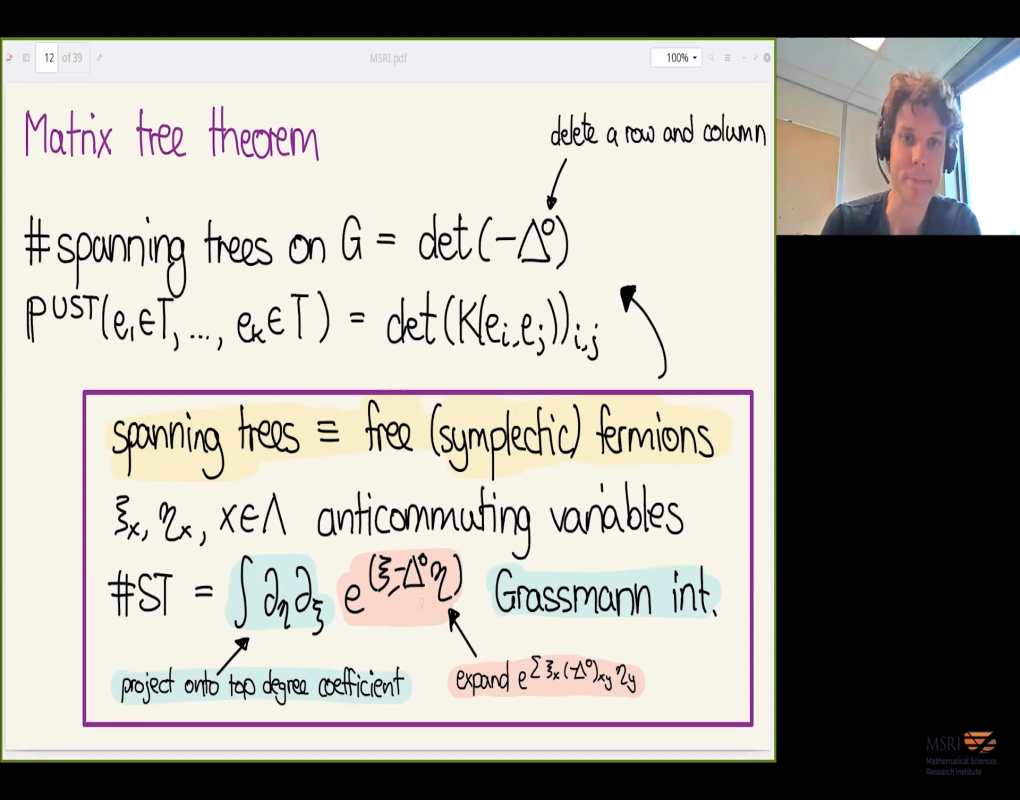Random Forests and Nonlinear Sigma Models (and What These Have to Do with Random Matrices)
Presenter
September 22, 2021
Keywords:
- random forests
- percolation
- nonlinear sigma model
- supersymmetry
- Ward identities
Abstract
Given a finite graph, the arboreal gas is the measure on spanning forests of this graph in which each edge of the forest is weighted by a parameter β>0. The main question is whether the arboreal gas percolates for a given β, i.e., if there is a component of the forest covering a positive fraction of the graph. We prove that (perhaps surprisingly) the arboreal gas does not percolate in two dimension, but that it does percolate in dimensions three and higher provided β>β_0. Our analysis also implies diffusive subleading corrections to the connection probabilities in the latter case. This problem has a lot of independent motivation from probability, combinatorics, and statistical physics, but what does it have to do with random matrices? Analogous behaviour is predicted for random Schroedinger operators or random band matrices. The arguably best physics predictions for this Anderson transition rely on the supersymmetric approach to random matrices. The question of percolation of the arboreal gas is also exactly related to that of spontaneous symmetry breaking of a (supersymmetric) nonlinear sigma model (the H02 model), but one that is vastly simpler to analyse. Indeed, while understanding spontaneously broken symmetries is in general a notorious problem, in the case of the H02 model, we can construct a low temperature renormalisation group flow in dimensions three and higher (and derive the percolation results from it). This is joint work with N. Crawford, T. Helmuth, and A. Swan.
